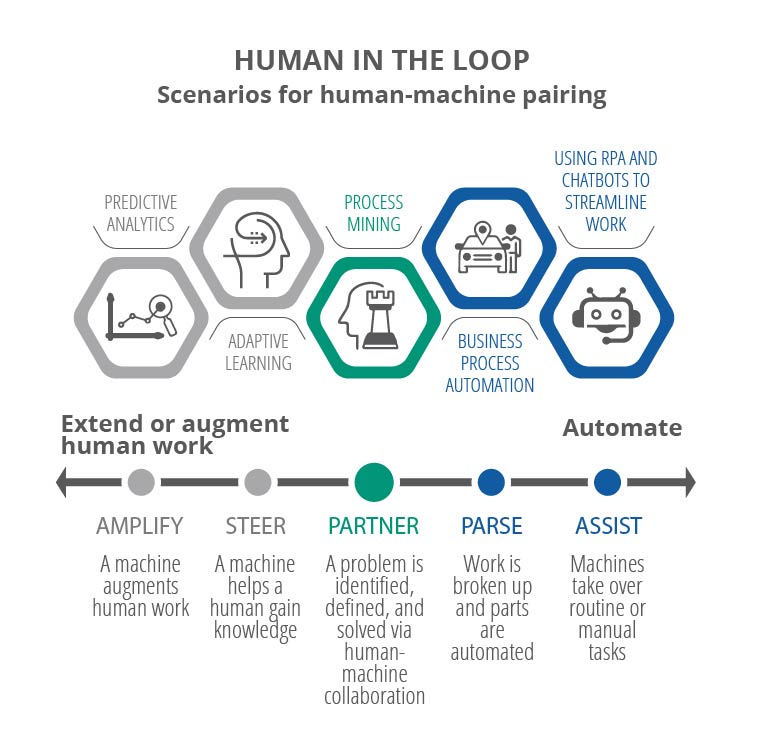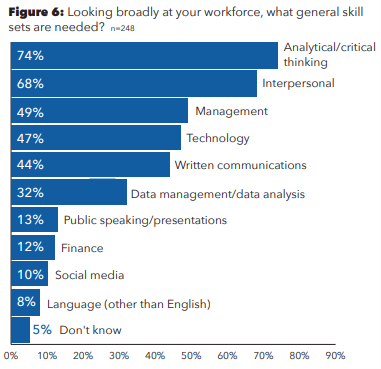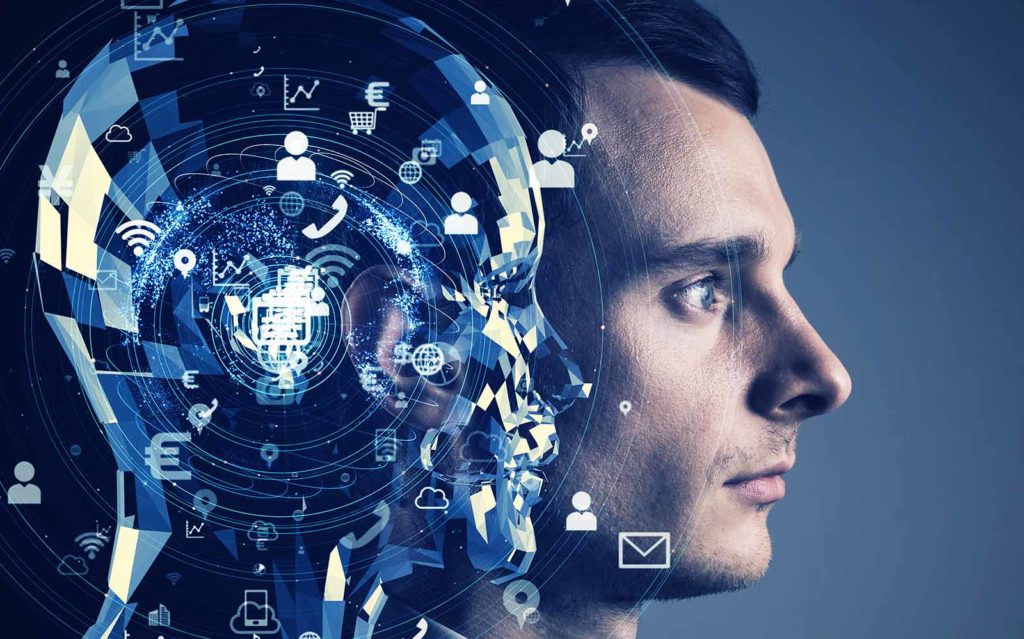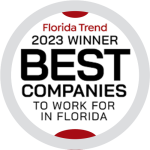From staffing shortages to budget shortfalls, government agencies are facing unprecedented challenges in the labor market—and of course, very little about the workplace will go back to its pre-COVID-19 state. What will the future of work look like for the public sector, and what can you do now to prepare for it? Let’s look at a few key opportunities to ensure your agency can continue to carry out your mission in a rapidly changing world.
1. Accelerate the Use of Artificial Intelligence and Automation to Augment Human Productivity
Across the board, a common challenge for agencies will be the lack of full-time workers to carry out the day-to-day tasks you’re accustomed to. Forward-thinking agencies are figuring out what can be done by “digital workers” instead.
First, a reassurance: machines will not replace humans! However, the best scenario for governments in the future is to boost productivity with what’s known as “human in the loop” AI processes. In other words, allow AI to do the things that it’s best suited for, while including humans in the parts of processes that require judgment, empathy, and navigating gray areas.

The human-machine pairing will take several forms:
- Amplify: Machines augment human work via tools such as predictive analytics.
- Steer: Machines provide adaptive learning to help people gain the knowledge needed to solve problems.
- Partner: Humans and machines work together to identify and solve problems through process mining.
- Parse: Work is broken up into tasks. Some are handled by Business Process Automation (BPA), while others require human judgment and expertise.
- Assist: Machines take over routine or previously manual processes via Robotic Process Automation (RPA) and chatbots.
Over the years, workers may put in fewer hours as time becomes more important than money. We help agencies prepare for this future with AI, machine learning (ML), process mining, and other tools in a combination known as hyperautomation.
2. Understand Employee Expectations
Another way to handle worker shortages is by understanding what motivates employees of various generations. While what follows are generalizations that can’t be applied to every individual, adapting to these trends can help attract new workers.
Baby Boomers
The current and future wave of retiring Baby Boomers, often called the “Silver Tsunami,” is having a disproportionate impact on the public sector, as most of its workforce skews older than average. According to Indeed.com, Boomers often consider their work a vital part of their self-worth and value the opportunity to work closely with their managers. Providing an environment where they can do so has the potential to keep them in the workforce longer.
Millennials
As much as government agencies value their more mature workforce, the future of work obviously lies with younger generations. The needs and perspectives of Millennials (45% of the workforce by 2024) and Generation Z will drive substantial changes.
Millennials seek flexibility and balance and are particularly drawn to remote work. They want to work for inclusive organizations that emphasize leadership ethics. Millennials also want to maximize their skill development via continuing education and switching roles (and employers).
Employers that provide opportunities for skills enhancement, cross-training, and personal development will be able to hire the best talent among this generation.
Gen Z
Generation Z seeks job security and growth. Having grown up digitally, they seek interpersonal relationships. Gen Z is also more motivated by their desire to create change in areas such as social and environmental issues. Public sector agencies can tap into this desire by emphasizing their commitment to their communities.
Like millennials, Gen Z workers expect change companies and roles several times to pursue satisfaction beyond bringing home a salary. And the ability to work remotely at this point is a given.
Agencies are updating their hiring and onboarding processes today because virtual and hybrid work is here to stay.
3. Prepare for New Jobs, New Skills, and the Talent Gap
As we integrate technology into our work, it’s only natural that new needs will create new jobs. World Economic Forum, ZDNet, and other organizations have explored future jobs. Let’s look at a handful of them:
- Human-Machine Teaming Manager: An extension of the robotics technician role, these specialists will help with training development, IT setup, and HR processes.
- Algorithm Bias Auditor: This role will help ensure that predictive algorithms don’t make faulty conclusions based on skewed training and testing datasets—from hiring decisions to actuarial data used in insurance and finance.
- Cyber Calamity Forecaster: Cyberattacks will grow in number and sophistication from individual hackers to collaborative groups. Forecasters will need skills in computer programming, geopolitics, and social sciences to predict attacks and their potential outcomes.
- Weather Modification Police: As technologies are developed to counter climate change, it’s easy to envision these tools in the hands of bad actors. These specialists would merge law enforcement and meteorological expertise.
- Narrowcaster: A narrowcaster will be a specialist in sending specific, targeted content to a small audience. Narrowcasters will likely be a shared resource for local and state governments where agencies serve similar demographics.
The Talent Gap
The common theme for all five of these future jobs is the confluence of big data, AI, and human judgment—but how can agencies fill these new roles?
More than 1 billion people worldwide will need new skills by 2030. The next generations of workers have grown up with computers and are comfortable with technology. Here’s the flipside: Government agencies report that their workers increasingly need skills like analytical and critical thinking, interpersonal skills, and more.
To prepare for the future, agencies must provide the ability for younger workers to build these “soft skills” while also supplying training on specific tools and technologies. In addition to in-person meetings and team-building tactics, learning to create automation is an excellent way for employees to practice soft skills. Creating automation allows employees to build tools that take care of repetitive tasks such as online aid applications, funds distribution processes, and chatbots for customer support.

4. Reconsider How Jobs and Work are Defined
Historically most work in the government sector was done by public servants, many of whom were generalists who wore many hats throughout the day. Agencies now need to consider additional ways work can be accomplished.
In the future, the day-to-day business of government will be accomplished by a wide range of blended resources and talent, including:
- Permanent full-time employees (mission-critical staff)
- Full-time and part-time contractors (management and team leaders, customer-facing roles)
- Digital labor (AI and automation)
- Ecosystem partners (nonprofits, businesses, labs)
- Government ventures (incubators, tech accelerators)
- Gig workers (hired for specific, one-off projects or based on seasonal demand)
- Micro workers (people working on individual tasks or subtasks)
- Crowd workers (crowd-sourced challenges with rewards for solutions)
There are a lot of moving parts to manage, but the benefits of a collaborative workforce include:
- Increased efficiency and productivity as people take on the work that best fits their skills and expertise.
- Automation and AI handle the work that humans can’t or don’t want to perform.
- Government becomes the recipient of tech transfers through public-private partnerships, such as The Department of Energy’s SunShot Catalyst Program.
In the Federal government, contractors already outnumber feds by 2.6 to 1. In the future, agencies will still have full-time employees. Still, those individuals will be specialists aligned to the organization’s high-level mission or are public-facing and interacting with citizens.
5. Engage in Proactive Workforce Planning
In a sponsored piece published in The Atlantic, Deloitte envisions the concept of a GovCloud:
Instead of endeavoring to predict the future, governments can choose to create a flexible workforce that can quickly adapt to future work requirements. To accomplish this, the government can learn from a game-changing concept in the technology world: cloud computing. Major organizations and small startups increase their flexibility by sharing storage space, information, and resources in a “cloud,” allowing them to scale resources up and down quickly. Why not apply the cloud model to people?
With fewer people seeking full-time employment or long-term commitments and work performed by employees near, far, and robotic, the concerns of Human Resources will shift from evaluating benefits providers to managing pooled interagency talent and rapidly selecting the best worker from a cloud-based inventory of available workers.
Government agencies will increasingly share resources, both offsite and onsite. Let’s look at a quick example. A state DHEC (Department of Health and Environmental Control) might regularly need the services of a graphic designer for a few hours each month. A DDS (Disability Determination Services) in the same region keeps a full-time illustrator busy at a satellite location. There’s no reason for this worker to drive across town and no need for DHEC to search for another graphic artist. The designer just needs the ability to log into a different infrastructure to perform the work securely.
But what about all those other resources like micro workers and gig workers? They’ll be managed by a cloud-based talent pool, with their work output and quality evaluated by a rating system similar to TripAdvisor or Amazon. In addition, human resource management (HRM) systems will include gamification to keep digital-native workers engaged, where task-based and gig workers gain access to educational resources and entertainment as they complete assignments.
Services like our Managed Cloud provide a secure, scalable, and efficient way to empower employees to work from anywhere with the latest automation toolset.
Conclusion
While no one can predict the future, we prepare you for the challenges of a truly digital workplace so you can take full advantage of all the cost savings, efficiencies, and, most importantly, the ability to serve your citizens better. Therefore, it is essential to assess and prepare for the future of work now as federal modernization funds are available for this exact purpose.
On June 5, 2020, the Bureau of Labor Statistics issued a report showing that state and local government employment fell by 571,000 jobs in May and 964,000 in April — a two-month total of 1.535 million public sector jobs lost. Accordingly, the only way to hedge against the talent shortage and the skills gap is to augment your staffing approach and deploy automation across your enterprise.
Learn more about digital solutions to transform and empower your workforce by contacting us today!






